#Navigating GI health
Text

Gain insights on navigating digestive health from top medical gastroenterologists in Hyderabad. Explore expert advice for optimal gastrointestinal wellness
Do Visit: https://www.healixhospitals.com/blogs/navigating-digestive-health:-insights-from-top-medical-gastroenterologists-in-hyderabad
#Top Medical Gastroenterologists in Hyderabad#Best Medical Gastroenterologists in Hyderabad#Medical Gastroenterologists in Hyderabad#Digestive health insights#Medical gastroenterologists in Hyderabad#Top gastroenterologists insights#Hyderabad GI specialists#Digestive health experts#Gastrointestinal health tips#Gastroenterology insights#Expert gastroenterologists in Hyderabad#GI health guidance#Medical specialists in Hyderabad#Gastrointestinal disorders advice#Navigating GI health#Hyderabad's top GI doctors#Gastroenterology expertise in Hyderabad#Expert insights on digestive health#Gastrointestinal health experts#Managing digestive disorders
1 note
·
View note
Text
dad!bts series mlist | a serendipitous life

welcome to my dad!bts series, a world i created with comfort in mind while we see how ot7 navigate through hardship and moments of bliss alongside their families. i started this series on my original blog moon-write, never expecting it to touch readers the way it did; i'm eager to bring it back. this series & my little families are very dear to my heart so i hope you'll treat it with kindess. find a cozy spot & stick around.
disclaimer: this series contains content that may be triggering, including but not limited to, pregnancies, medical emergencies, mental health, and occurrences that are emotional and distressing, please heed content warnings before proceeding.
readers are nick-named & written in a female perspective.

background;
meet the readers | the hyung's wives, the maknae's wives
a little bit of insight on each members' partner.
how you met | backstories
a look into the members' pasts and how they came to meet their future s/o's.

↳ reader: bell jeon | offspring: eun jung
before kids;
newborn - toddler years;
childhood years;

↳ reader: luv kim | offspring: haneul
before kids;
newborn - toddler years;
childhood years;

↳ reader: chick park | offspring: jiun & jinyeol
before kids;
newborn - toddler years;
childhood years;

↳ reader: moon kim | offspring: iseul & eunjoo
before kids;
newborn - toddler years;
childhood years;

↳ reader: sunny jung | offspring: huimang
before kids;
newborn - toddler years;
'i can hear him smile.' | hobi & sunny | family fluff | 1k +
you aren't quite sure why hobi is so quiet since returning from tour.
childhood years;

↳ reader: kitt min | offspring: dae
before kids;
newborn - toddler years;
childhood years;

↳ reader: hart kim | offspring: gi, yun, & junsu
before kids;
newborn - toddler years;
childhood years;

This is a work of fiction curated from my own imagination and written as a creative outlet for entertainment purposes only. Any names or characters, businesses or places, events or incidents, are fictitious. Any resemblance to actual persons, living or dead, or actual events is purely coincidental.
#bts fanfic#dad!bts#bts x reader#bts fluff#bts angst#jungkook x reader#taehyung x reader#park jimin x reader#namjoon x reader#jhope x reader#hobi x reader#yoongi x reader#seokjin x reader#jungkook fluff#taehyung fluff#park jimin fluff#namjoon fluff#jhope fluff#yoongi fluff#seokjin fluff#dad!bts series: a serendipitous life by serendipitous-seven
161 notes
·
View notes
Note
In the PIXAL and Lloyd role swap AU, how would PIXAL handle all that responsibility and power? Will it lay as heavily on her shoulder's as it does Lloyd's? Will she have people to turn to? Will she be slaying as usual but in a green gi?
And how will Lloyd be in PIXAL's role? Will he eventually be Samurai X? How is his health?
The Pixal and Lloyd roleswap AU (or as I affectionately call it: The Grixal AU) starts out pretty similarly to an OverLloyd AU - the Overlord possesses Lloyd in s3, wreaks havoc, the whole nine yards.
S3 progresses as you would expect. Zane sacrifices himself to defeat the Overlord, both he and Lloyd “die,” and they get their funerals and their statues. Zane goes to the Digiverse and Lloyd goes… actually, I’m not sure yet. My original idea was to put him in the Digiverse with Zane but I’ve turned to other potential ideas:
A) Lloyd ends up in the Borg Ind. electrical system and communicates with flashing lights.
B) Lloyd ends up among nature and Pixal must resort to trying to talk to a very grumpy house plant.
Anyway, as it goes, Ronin comes to collect Zane at Chen’s request and a scuffle ensues. In this scuffle, Lloyd transfers a lot of power through Zane and into Pixal in an attempt to electrocute Ronin. It works—but lands them all in a predicament.
Pixal accidentally downloads Lloyd’s powers and Zane downloads Lloyd’s sentience/soul.
Hence the Role Swap - Pixal becomes the Green Ninja.

And Lloyd gets stuck in Zane’s head.
This weighs very heavily on Pixal. The green energy is a LOT and the whole thing slingshots her into an identity crisis and struggle for autonomy bc she feels as though she’s suddenly gone from all powerful being’s control (the Overlord) to another’s (destiny/the prophecy.)
She can always rely on Dr. Borg, of course. He is her creator and father and would always advocate for her choices.
The others don’t take it so well. Garmadon, especially, is both extremely hurt and yet understanding. He and Wu are under the impression that Lloyd has chosen Pixal to succeed him, for whatever reason. (Despite Pixal’s yelling that THAT’S NOT WHAT HAPPENED. Lloyd is out there somewhere, she can feel it.)
As for Zane, well…
Zane’s arc progresses into s4 but instead of having the calm, rational Pixal in his head, he has his gremlin baby brother.

Now, I interpret Zane has having few impulses and low impulse control and Lloyd as having powerful impulses and fantastic impulse control.
Tell me, friend, what do you think happens when you combine Lloyd’s strong impulses with Zane’s low control.
Is the answer “chaos?” Because that would be correct.
“Zane, you should kill that guy… WAIT I WAS KIDDING!!”
And thus, these two knuckleheads get left trying to navigate each other minds and Chen’s island—and perhaps come to an understanding about each other’s ideas in regards their purpose and powers.
(To answer your question, no I don’t think Lloyd will become Samurai X—or if he does, it’ll be very temporary. I really only want 1-2 seasons worth of content and for Pixal’s goal to culminate in asserting her choices. I think this au is more meant to serve as a deep character analysis on Zane, Pixal, and Lloyd than it does any actual changes to the series.)
#oof sorry I took so long to answer this#ninjago#lego ninjago#lloyd garmadon#lloyd ninjago#zane julien#Zane ninjago#Pixal Borg#Pixal ninjago#Ninjago Grixal AU#hails talks#long post#okay but I am SO PROUD of the colors on that Pixal price I did aaaaaaa
62 notes
·
View notes
Text
GIS In Our Daily Lives
The involvement of Geographic Information Systems (GIS) in our daily lives is pervasive, influencing and enhancing various aspects across different sectors. The integration of GIS into everyday activities has become integral for decision-making, planning, and optimizing resources. GIS helps city planners and transportation experts to provide them with information like maps, satellite pictures, population statistics, and infrastructure data. GIS helps them make better decisions when designing cities and transportation systems that are sustainable and good for the environment.
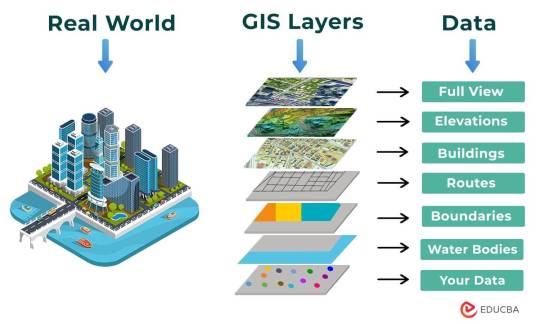
The following points elucidate the notable involvement of GIS in our daily lives:
Navigation and Location Services: GIS provides monitoring functions through the visual display of spatial data and precise geographical positioning of monitored vehicles, whereas GPS provides accurate, clear, and precise information on the position and navigation of a monitored or tracked vehicle in real-time and at the exact location.GIS is at the core of navigation applications and location-based services on smartphones. It enables accurate mapping, real-time navigation, and geolocation services, assisting individuals in finding locations, planning routes, and navigating unfamiliar areas.
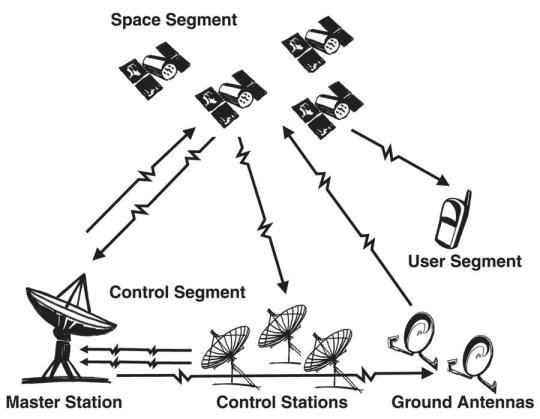
E-Commerce and Delivery Services: GIS software is a powerful tool for supply chain network planning. It helps determine the optimal location for distribution centers, warehouses, or other supply facilities. GIS is utilized in logistics and delivery services for optimizing routes, tracking shipments, and ensuring timely deliveries. E-commerce platforms leverage GIS to enhance the efficiency of their supply chain and last-mile delivery processes.

Weather Forecasting and Disaster Management: Many states are using GIS dashboard to monitor the rainfall across the state, on a real-time basis, from the data shared by rain sensors installed at various locationsGIS plays a crucial role in weather forecasting and disaster management. It assists meteorologists in analyzing spatial data, predicting weather patterns, and facilitating timely responses to natural disasters by mapping affected areas and coordinating emergency services.

Healthcare Planning and Disease Monitoring: Geographic Information Systems enable the visualization and monitoring of infectious diseases. Additionally GIS records and displays the necessary information that health care needs of the community as well as the available resources and materials. GIS supports public health initiatives by mapping the spread of diseases, analyzing healthcare resource distribution, and assisting in the planning of vaccination campaigns. It aids in identifying high-risk areas and optimizing healthcare service delivery.

Social Media and Geo-tagging: GIS also helps in geotagging and other location related information in posts, it’s tools can map and visualize the spatial distribution of social media activity. This analysis can reveal trends, hotspots, and patterns in user engagement across different geographic areas. Many social media platforms incorporate GIS for geo-tagging, allowing users to share their location and experiences. This feature enhances social connectivity and facilitates the sharing of location-specific information.
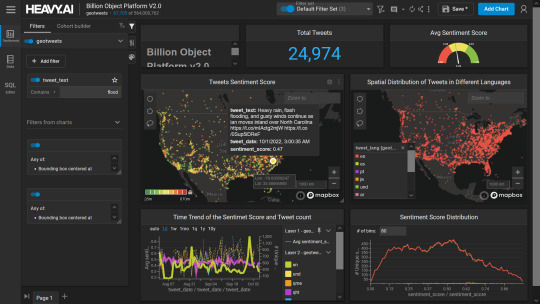
Smart City Initiatives: The Geographic Information System (GIS) offers advanced and user-friendly capabilities for Smart City projects and allows to capture, store and manipulate, analyze and visualize spatially referenced data. It is used for spatial analysis and modeling. It is the cornerstone of smart city planning, enabling the integration of data for efficient urban management. It supports initiatives related to traffic management, waste disposal, energy consumption, and overall infrastructure development.

Education and Research: GIS is increasingly utilized in education and research for visualizing and analyzing spatial data. It enables students and researchers to explore geographic relationships, conduct field studies, and enhance their understanding of various subjects.

Agricultural Management and Precision Farming: Farmers leverage GIS to optimize agricultural practices by analyzing soil conditions, crop health, and weather patterns. Precision farming techniques, facilitated by GIS, contribute to increased crop yields and sustainable farming practices.

Real Estate and Property Management: In the real estate sector, GIS aids in property mapping, land valuation, and site selection. It provides real estate professionals with valuable insights into spatial relationships, market trends, and optimal development opportunities.

Tourism and Recreation: GIS enhances the tourism industry by providing interactive maps, route planning, and location-based information. It assists tourists in exploring destinations, finding attractions, and navigating efficiently.

The broad and varied involvement of GIS in our daily lives underscores its significance as a technology that not only facilitates geographic data analysis but also contributes to the efficiency, safety, and interconnectedness of modern society. As GIS applications continue to evolve, their impact on daily activities is expected to further expand and refine.
#gis#architectdesign#architecture#city#education#geographic information system(gis)#geographical indication
12 notes
·
View notes
Text
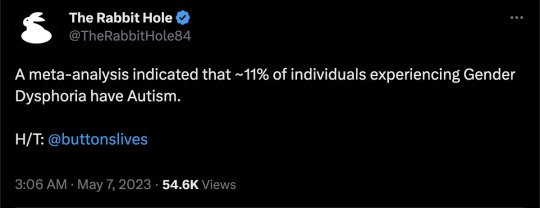
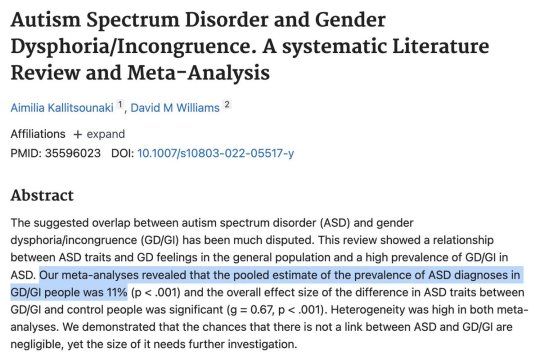

By: Christina Buttons
Published: Mar 24, 2023
Children and adolescents on the autism spectrum are disproportionately represented among the large, newly emerging cohort of young people self-identifying as transgender.
In recent years there has been an exponential rise in the number of adolescents and young adults adopting transgender identities, stirring intense debate about its underlying causes. Mainstream discourse on this issue has centered on factors such as social influence, greater societal acceptance, and expanding definitions of what it means to be transgender.
However, an important yet largely unexplored factor that may be contributing to this trend is undiagnosed autism, particularly in young girls. Without a diagnosis, and even with a diagnosis but without a clear understanding of how autistic traits can present, these traits can be easily confused for gender dysphoria and cause individuals to pursue inappropriate and irreversible medical interventions.
Autism Spectrum Disorder (ASD) is a complex neurodevelopmental condition that affects communication, social interaction, and behavior that presents in varying degrees of severity from individual to individual. However, despite its history and prevalence, it remains a highly misunderstood disorder, especially in girls.
As many as 80% of girls with autism are not diagnosed until they reach adulthood, which can cause significant mental health problems and incorrect early diagnoses. This underdiagnosis is primarily due to the common misconception that autism is a predominantly male disorder. In fact, the Centers for Disease Control and Prevention (CDC) still maintains that “ASD is more than 4 times more common among boys than among girls.”
However, autism experts now believe that the sex ratio is much more evenly matched than previously thought. Girls often fly under the radar because the diagnostic criteria is better at detecting male-typical traits. Girls are also better at masking their symptoms, adapting to social situations, and tend to have interests that don’t fit the stereotypical profile of autism.
During puberty, autistic girls often experience exacerbated social and sensory challenges due to hormonal changes affecting their bodies and brains. These difficulties can be compounded by the pressure to navigate unfamiliar social situations and expectations, which can lead to the development of co-occurring conditions such as depression, anxiety, and body image issues. Unfortunately, the challenge of communicating their experiences may cause mental health professionals to overlook their underlying autism.
Given that autism is greatly underdiagnosed in young girls, I do not believe it is a coincidence that we are seeing a significant surge in adolescent girls self-diagnosing with gender dysphoria. An incorrect early diagnosis can lead to inappropriate treatment, which can result in devastating effects to their mental health and well-being.
This issue is very personal to me because I went through severe mental health struggles during my adolescence. It required multiple psychiatric hospitalizations and a long-term stay in a residential treatment center before I finally received an Asperger’s diagnosis at the age of 30. When I came across the stories of detransitioners, many of whom also came to understand they had autism after their misadventure, I felt a strong connection to them that motivated me to become a journalist and bring attention to their stories.
I’ve interacted with many of these young men and women who formerly identified as transgender, and some I now consider friends and have met in person. The prevalence of autism among them, and how these traits may have played a central role in their transition journey, is too significant to ignore.
While my observations of this cohort are neither comprehensive nor conclusive, I believe they nevertheless provide some much needed insight into this understudied population. These observations were gleaned from my conversations with 48 detransitioners and their written testimony.
Out of the 48 detransitioners whom I’ve come into contact with, 42 (32 females and 10 males) have confirmed autism or suspected autism (identification with autistic traits). Although the remaining 6 were confident they were not autistic, they believe their perceived gender dysphoria was due to a variety of other reasons, including other psychiatric disorders.
Among the 42 detransitioners who have confirmed or suspected autism, only 5 had been diagnosed before or during their transition. All 5 told me that if they had fully understood what being autistic entailed and how it could manifest in their lives, they probably would not have believed they had gender dysphoria. They also said that “gender identity” and transgender issues became their “special interest” for a period of time.
This observation was also made by Dr. Kenneth Zucker, a psychologist with 30 years of experience running the largest Canadian childhood gender clinic, who believes that many autistic teens identify as transgender because of their tendency to fixate or obsess over a “special interest.”
As for the remaining 37 detransitioners, about half obtained an official diagnosis after they detransitioned and said that an earlier autism diagnosis could have prevented them from seeking medical transition services they now regret. Some detransitioners have written about these revelations.
The other half are either in the process of seeking a diagnostic evaluation or are not interested, but found that they identify with autistic traits. Some of the reasons for not actively seeking an evaluation include long wait times and a general skepticism of mental health professionals who had previously failed to properly assess them.
Detransition among young people is growing. A forum for detransitioners on Reddit now exceeds 45,000 members and is adding roughly 1,000 members per month. In the United States, a 2022 study found that 29% of 68 patients seeking medical transition care changed their requests for hormone treatment, surgery, or both. Another U.S. study from 2022 found that 30% of patients who commenced cross-sex hormone treatment discontinued it within four years for unknown reasons. Two small studies in the U.K. report that between 7% and 10% of patients initially assessed for gender-related medical services later detransitioned.
Detransitioners have described being immediately “affirmed” in their recently adopted transgender identities without careful assessment. Some of them were teenagers when they began transitioning, and many now feel that they have been medically harmed due to the various chemical and surgical interventions they underwent. This is unacceptable and nobody should have to experience this.
One way to help mitigate such outcomes would be to improve education on autism, particularly how it presents in girls, and advocate for early diagnosis. This isn’t to diminish the experiences of transgender adults on the spectrum but rather to rule out false positives. An earlier diagnosis of autism may prevent some from mistaking their autism for gender dysphoria.
Aside from early screening for autism, the affirmative care model used by many US medical organizations poses a significant risk to vulnerable autistic individuals who may self-diagnose with gender dysphoria and seek irreversible medical interventions to alleviate their distress.
The gender-affirmation model that has been adopted widely across the US prevents medical professionals from questioning an individual’s self-reported transgender identity or exploring possible underlying factors causing their perceived dysphoria. The standard protocol for gender affirmation in minors involves administering puberty blockers, followed by cross-sex hormones, and then surgery if desired.
Despite research indicating that roughly 60-90% of children who identify as transgender but do not socially or medically transition will no longer identify as transgender in adulthood, children are still put in the driver’s seat of their own sex change operations.
The affirmative model of care has been abandoned in Florida and in progressive European countries like Finland, Sweden, the UK, and most recently Norway, after conducting systematic reviews of the available evidence and concluding that the risks of pediatric medical transition far outweigh any purported benefits. This resulted in the closure of prominent gender clinics, strict restrictions on the use of cross-sex hormones, and a ban on gender-related surgeries for minors. Italy, Australia, and Spain's medical bodies have also recently raised similar concerns.
If US-based medical organizations were willing to walk back the affirmative model of care and prioritize thorough evaluations and thoughtful, individualized assessments that explore why someone might be feeling distress over their gender, they could prevent misdiagnosis and inappropriate treatment.
It is important to understand how autistic traits can be mistaken for and misdiagnosed as gender dysphoria. I have therefore compiled a list to help with this understanding.
Traits of autism that may be mistaken for gender dysphoria
Autistic people face a number of challenges that are intensified when they don’t have a proper diagnosis or are not adequately educated about how their traits can present. Some of the attributes that can lead to confusion over their “gender” include identity issues, rigid or “black and white” thinking, intense and restricted interests, gender nonconforming behavior, social difficulties and a preference for online socialization, incongruence with the body, and other comorbidities.
Identity
By adolescence, autistic people typically intuit that they differ from their peers, but are unable to pinpoint or describe the reason, which can be distressing. As they struggle to assimilate, they may become preoccupied with understanding themselves and how they fit in with those around them. In a desperate attempt to resolve their distress, they may “try on” different identities or diagnoses to see what “fits.”
Rigid thinking
One of the core features of autism is rigid thinking, a cognitive style that is characterized by inflexible and repetitive thought patterns, behaviors, and routines.
In recent years, the significance of gender dysphoria as a meaningful diagnosis has been deemphasized in favor of a broader definition of what it means to be transgender, or “gender diverse,” which includes mere nonconformity to sex-based stereotypes. Autistic people could easily interpret this definition to mean they are transgender.
Autistic people may prefer simple explanations, and be prone to black and white thinking. When they come across overly simplistic views about gender, it can provide them with a quick explanation for their troubles (they are transgender) and a ready-made solution (transition) to achieve what they hope will be a sense of normalcy and comfort in their bodies.
Sometimes girls who are more gender nonconforming will feel they cannot compete with girls they perceive as more feminine, popular, and attractive. Because autistic girls can easily get locked into black and white thinking, this may cause them to reject femininity and embrace masculinity.
Autistic people have an aversion to inauthenticity. Once introduced to the concept of “gender identity,” they may reexamine their life history through this lens, looking for signs they may be transgender. Through a process of confirmation bias, they may find traits and life events that conform to a transgender narrative.
Autistic people have difficulty with flexible thinking and are less likely to change their minds once convinced something is true. They may become deeply attached to their beliefs and find it difficult to consider alternatives. If they become convinced they are transgender, it can be difficult to dissuade them.
Autistic people also tend to be very literal and so when they come across statements meant to be figurative and promote inclusivity like “trans women are women” and “trans men are men,” they may take it literally. They may come to believe they can actually change their sex.
Their naivety may also play out in their expectations of social and medical transition, and they can become extremely frustrated if their expectations are not met.
Their tendency towards rigidity in thinking can make it challenging to adapt to changes in gender norms or expectations. This rigidity may be misinterpreted as a strong identification with one sex and discomfort with another.
Intense and restricted interests
One of the hallmarks of autism is intense and obsessive interests in certain topics or hobbies, also known as “special interests.” Special interests are a common characteristic of ASD and can become all-consuming passions that provide individuals with a sense of comfort, enjoyment, and mastery.
Research suggests that there may be sex differences in the types of special interests that autistic boys and girls develop. For example, one study found that autistic girls were more likely to have interests in people and animals, while autistic boys were more likely to have interests in objects and systems.
It’s quite possible for individuals with ASD, especially females, to become deeply interested in social justice and transgender issues. They may become fixated on exploring and understanding “gender identity,” including their own and the experiences of other “gender diverse” individuals. This interest may involve reading and researching about gender identity, attending support groups or advocacy events, or engaging in creative expressions online or joining online communities.
Autistic people have a strong sense of justice and fairness, and may become interested in topics of "social justice" they come across in online communities on social media.
Autistic people may find themselves fascinated with the transgender community and its cultural significance, with its many charismatic transgender influencers and frequent relevance in the news. With the transgender community’s growing popularity, there are endless ways to interact with this special interest.
“Gender identity” ideology comes from a postmodern social theory developed in college Humanities departments called “Queer Theory,” which has been written about and lectured on extensively. It can provide endless hours of learning for anyone interested in the subject.
“Consistent, persistent, insistent” are the words used by medical providers as strong indicators that someone has gender dysphoria, but they could easily also describe a autistic person’s relationship to their special interest.
Gender nonconformity
Historically, autistic people have been more likely to display sex atypical behavior. Young people should not be discouraged from gender nonconformity. It is perfectly natural and okay for a girl to have more stereotypically masculine traits and interests and for a boy to have more stereotypically feminine traits and interests – this does not equate to gender dysphoria.
A 2014 study found that children with ASD were 7.59 times more likely to be gender non-conforming or “express gender variance.”
A 2021 study found that gender nonconformity is substantially elevated in the autistic population.
Several studies have suggested that autism spectrum disorder (ASD) and gender nonconformity co-occur more often than by chance in adolescents.
Sexuality also appears to be more varied among people with autism than among those who do not have the condition. Only 30% of autistic people in a 2018 study identified as heterosexual, compared with 70% of neurotypical participants. And although half of 247 autistic women in a 2020 study identified as “cisgender,” just 8% reported being exclusively heterosexual.
Gay males may also not be well-detected by standard diagnostic criteria, as some may have more female-typical traits.
Because of the expanding definition of what it means to be transgender, now defined by major institutions as an “umbrella term” which encompasses mere gender nonconformity, autistic people might believe that because they don’t conform to sex-based stereotypes, they could be transgender.
Autistic people may socially gravitate towards the opposite sex. They may find it easier to communicate with and have more in common with the opposite sex. This may lead them to believe they actually are, or should become, the opposite sex.
Social Difficulties
Gender is often presented as a “social construct,” and one of the hallmark traits of autism is a host of social challenges. Struggling to adapt to “gender roles” can significantly contribute to a rejection of their perceived “gender role” which can lead to a rejection of their biological sex by extension.
Difficulty with social communication: Individuals with autism may have difficulty with social communication and understanding social cues, which can make it challenging to navigate gender norms and expectations. These experiences can be frustrating and cause them to reject the norms associated with their sex.
Repetitive behaviors: Individuals with autism may engage in repetitive behaviors, or “stims,” that can sometimes be misinterpreted as sex-atypical behaviors.
For girls, repetitive or disruptive movements may be viewed as unfeminine and may lead to social rejection from peer groups.
Difficulty with social imagination: Individuals with autism may have difficulty with social imagination, which can make it challenging to envision oneself in different roles or identities. This difficulty may be misinterpreted as a lack of identification with one's biological sex.
Difficulty with perspective-taking: Individuals with autism may have difficulty understanding other people's perspectives or social expectations, which can make it challenging to navigate gender roles and expectations.
Difficulty with emotional regulation: Individuals with autism may have difficulty with emotional regulation, which can lead to intense and distressing emotional responses to certain situations or social expectations related to gender roles.
Autistic people often learn to adopt alternative personas to cope with and blend in with different social settings, which may make it easier for them to adopt a cross-sex identity.
Preference For Online Socialization
Individuals with autism have more difficulty with in-person social relationships, leading them to prefer online socialization, which can be easier and less stressful for them to navigate. One reason is that online interactions can provide a sense of control and predictability that may be lacking in face-to-face interactions.
Autistic individuals may find it easier to communicate online because they have more time to process and respond to messages. They can also avoid nonverbal communication that they find difficult to interpret. Additionally, online communication can be less overwhelming and less sensory-stimulating than in-person communication.
Another reason is that online interactions can provide opportunities to connect with others who share similar interests or experiences, which can be more difficult to find in-person.
Currently, there is heavy cross-over between the online autism community and “social justice.”
Autistic people lack an understanding of social behavior and may be prone to mimicking what they see online. Social media algorithms may feed them a steady stream of content from the online transgender community that may lead them to believe that it is how they are “supposed” to act to fit in.
They may discover a transgender influencer who is popular as “socially successful” and try to mimic their behavior, clothing, body language, and interests to assimilate. They may desire to create “content” like other transgender influencers.
Autistic people typically like rules, as they provide a sense of structure and predictability. They may like that the social rules enforced by online Social Justice communities are made explicitly clear in shareable Instagram infographics.
Some autistic people have a particular talent for visual-spatial skills, which could lead to an aptitude for creative fields such as art or design and some are creative musically or with writing. Creative autistic types may be influenced by “gender expressions” they see online, which include making up your own “neopronouns.” They may want to express their own creativity through their understanding of “gender.”
Many autistic people feel socially awkward, have difficulty making friends, and are lonely. The growing population of the transgender community that embraces people who are different may seem welcoming and a built-in network of friends and support may be appealing.
In the online world, people are encouraged to create their “brand.” They may want to find an online persona in a niche community.
They may be influenced by others to reject the people in their life who do not “accept” them, join “glitter families” or go “no contact” with their real families. With fewer people offline to keep them tethered to reality and provide different points of view, they may further succumb to the echo chambers of online communities.
Incongruence With Body (Disconnect and Discomfort)
Autistic people struggle with interoception (sensing internal signals from your body). They can recognize they feel discomfort but have trouble interpreting their bodily signals and pinpointing where it is coming from. This is worsened by challenges with alexithymia (an inability to identify and describe emotions). Without proper diagnosis, this can contribute to a feeling of incongruence with their body.
Autistic people, especially if they lack a diagnosis, can easily get overwhelmed by sensory input, but may not have the words to articulate what is making them feel uncomfortable. Ongoing discomfort in one’s body may be mistakenly attributed to gender dysphoria.
Individuals with autism may experience tactical sensory sensitivity, which can make it uncomfortable to wear certain types of clothing or accessories associated with their biological sex.
For example, girls on the spectrum may prefer clothing that is more typical for boys because it is loose-fitting and more comfortable. They may mistakenly attribute this to being more “boy-like.”
Especially for adolescent girls, not adhering to the latest fashions of their peers may make them feel like an outcast.
Individuals with autism may also experience sensory issues with grooming activities, which can make it challenging to adhere to gender norms and expectations.
Girls may find that makeup feels uncomfortable.
Girls may prefer to keep their hair short, or in a ponytail everyday because letting their hair down feels irritating on their skin.
Young boys may want to grow their hair long because they hate the experience of going to the barber.
Autistic people often struggle with proprioception, which may manifest as having difficulty understanding where their body is in space. This can result in challenges with coordination, balance, and fine motor skills, which may lead to feelings of frustration or disconnection from their physical body.
Adolescents with developing bodies that don’t feel like they meet stereotypical ideals for their sex may reject their bodies and hyperfocus on their perceived flaws, leading to body image disorders.
For adolescents, discussions of gender dysphoria in the classroom may be the first time that “discomfort of the body” is introduced and articulated to them, which they may find they can relate to and begin to associate their own bodily discomfort with gender dysphoria.
The succession of steps involved in social transition and then in medical transition may make them feel that they are on the path towards finally feeling “right” in their body.
Comorbitities
Individuals with autism, especially without a diagnosis, are more likely to experience co-occurring mental health conditions, such as anxiety or depression, which can complicate the assessment of gender dysphoria.
Depression:
Autistic people have social difficulties that make it harder to make and maintain friendships, leading to isolation and depression, and this effect is worsened when individuals do not receive a diagnosis of autism until adulthood.
A 2022 study found people diagnosed with autism in adulthood are nearly three times as likely as their childhood-diagnosed counterparts to report having psychiatric conditions.
A 2021 study shows that receiving an autism diagnosis in adulthood rather than childhood can lead to lower quality of life, more severe mental health symptoms, and higher autistic trait levels.
Suicidal Ideation
A growing body of research has found that autistic youth and adults appear to have higher rates of suicidal thoughts, plans, or behaviors than non-autistic youth.
A meta-analysis found that one in four autistic youth experience suicidal ideation and almost one in ten attempt suicide.
A Danish study found that autistic individuals had 3 times higher rates of both attempted and completed suicide.
A 2022 UK study found a significant number of people who died by suicide were likely autistic, but undiagnosed.
Obsessive Compulsive Disorder
Autistic people are more prone to obsessive compulsive disorder and may obsess over their desire to become the opposite sex to escape their unhappiness.
One study found 17% of autistic people may have OCD.
An even larger proportion of people with OCD may also have undiagnosed autism, according to one 2017 study.
It might be helpful to view gender dysphoria as a form of OCD, in which the individual attributes their biological sex as a source of distress and obsesses over the desire to become the opposite sex. Alternatively, some OCD clinics have attempted to distinguish between gender dysphoria and what they termed as “Trans OCD,” which is “an obsession over gender identity.”
Body Image Disorders
Autistic people are more prone to having body image issues that may make them fixate on their weight (eating disorders like anorexia or bulimia) or perceived flaws (body dysmorphia).
Roughly 20% of people with anorexia are autistic.
Body dysmorphia is a disorder in which one develops a fixation on perceived flaws on the body that become exaggerated in the mind. It is part of a new category of “obsessive-compulsive and related disorders” that autistic people are over-represented in.
Anxiety
Anxiety is a common co-occurring condition in autistic individuals.
Research suggests that up to 40-50% of autistic individuals may experience clinically significant anxiety symptoms at some point in their lives.
One study found that up to 84% of autistic people have some form of anxiety.
Gastrointestinal Distress:
Gastrointestinal (GI) disorders are one of the most common medical conditions that are comorbid with Autism spectrum disorders (ASD). This can contribute to discomfort and incongruence with the body.
Some studies have suggested that up to 90% of individuals with autism may experience GI symptoms, such as abdominal pain, constipation, diarrhea, and reflux.
A comprehensive meta-analysis revealed that children with ASD were more than 4x more likely to develop GI problems than those without ASD.
Polycystic Ovarian Syndrome (PCOS)
Research indicates an association between Polycystic ovary syndrome (PCOS) and autism. PCOS is a hormonal condition that involves intricate interactions among the ovaries, androgens, other hormones, and insulin. One prominent feature of this condition is increased levels of androgens or "male hormones." The heightened androgen levels, along with virilization, can be a source of considerable distress for several women and result in a form of gender dysphoria.
One study found autistic women in the UK have an almost two-fold increase in the risk for PCOS.
A 2012 study found that women with PCOS have ”problems with psychological gender identification. Duration and severity of PCOS can negatively affect the self-image of patients, lead to a disturbed identification with the female-gender scheme and, associated with it, social roles.”
Trauma:
If an autistic person has a traumatic experience, they are more likely to internalize it. If they are sexually abused or groped they may develop negative associations with the part of their anatomy that was abused and feel the need to reject it.
Autistic girls are at heightened risk of sexual abuse.
Research has shown that individuals with autism who have experienced sexual abuse may be more likely to experience internalizing symptoms such as depression, anxiety, and post-traumatic stress disorder (PTSD) compared to non-autistic individuals who have experienced sexual abuse.
One reason for this may be that autistic individuals may have difficulty communicating their experiences and feelings about the abuse, which can lead to a sense of isolation and helplessness.
Autistic individuals may also struggle with processing and regulating their emotions, which can make it more difficult to cope with the trauma of sexual abuse.
Other contributing factors:
The Pandemic: When non-emergency clinics were closed, many young people were socially isolated and depressed, turning towards online mental health communities and self-diagnosing. We saw this happen with the emergence of “TikTok tics” and the resurgence of the once-extremely rare Dissociative Identity Disorder (DID).
Puberty: Puberty is a time of significant changes in the body and brain, which can affect individuals with autism in different ways. During this window, they may experience worsening mental health, bodily discomfort and social difficulties. Without a diagnosis, autistic adolescents may not understand why they are experiencing these difficulties and may feel isolated and confused.
Stressful life events: Stressful life events can be particularly challenging for autistic individuals due to difficulties in coping with changes, uncertainties, and unpredictability. Autistic individuals may struggle with changes in routine, unexpected events, and situations that require flexibility and adaptability.
Loss of Asperger’s as a diagnosis: The diagnosis of Asperger’s Syndrome was merged into an umbrella diagnosis called Autism Spectrum Disorder (ASD) in the DSM-V update in 2013, which may contribute to a lack of diagnosis in those who appear to have less visible symptoms. The general population associates autism with severe disability, and those without an intellectual disability may be less likely to get diagnosed.
Misdiagnosis: The difficulty that autistic people face in regulating emotions and the trouble they have in relationships can be misinterpreted and is often misdiagnosed as Borderline Personality Disorder, Bipolar Disorder and more.
==
~11% of trans identifying people have autism, whereas ~1% of people in the general population have autism.
I'm just going to say it: maybe don't trans the autistic.

Sorry, not sorry.
#The Rabbit Hole#Christina Buttons#autism#autism spectrum disorder#autism spectrum#gender ideology#genderwang#queer theory#gender noncomformity#gender nonconforming#anxiety#body image disorders#trans identity#don't trans the autistic#unpopular opinion#trans the autism away#religion is a mental illness
27 notes
·
View notes
Note
6, 12, and 18 please !!!!!!
hi gi !!!!!!
6. say three nice things about yourself (three physical and three non-physical).
-I have pretty eyes. they're a dark green color that most people think are hazel until they look close enough
-freckles!! they used to be a huge insecurity of mine as a kid, but I've grown to love them. I have freckles all over my face and body, and they make me look unique
-my eyelashes are naturally long. Like I rarely even use mascara
-I am a very good listener. I'm that friend who is the quiet one who prefers to listen to people talk.
-I'm proud of my sense of style. It was hard to navigate what clothes I liked to wear as a mid-sized/plus-sized person
-I'm proud that I graduated with a BSW and working in the mental health field
12. how are you?
I'm just getting out of a bad depressive episode that lasted two months, so I'm feeling a lot better now <3
18. do you still love stuffed animals?
yes!!! I have three on my bed at the moment. a pink inkling from Splatoon, a HUGE pink koala Squishmallow, and my blobfish (I really like pink, can't you tell?)
2 notes
·
View notes
Text
Comprehensive Gastrointestinal Care with Dr. Rajesh Tandulwadkar: Expert Treatment for Hernia, Gallstones, Appendicitis, and Liver Conditions
Introduction
Navigating gastrointestinal health issues can be challenging, and finding the right specialist to address your needs is crucial. At Solo Clinic GI - Surgical Gastro Care, Dr. Rajesh Tandulwadkar offers comprehensive and expert care for a range of gastrointestinal conditions. With extensive experience in treating conditions such as hernias, gallstones, appendicitis, and fatty liver, Dr. Tandulwadkar is dedicated to providing top-notch surgical and non-surgical treatments tailored to each patient’s unique needs. If you're searching for a piles doctor near you, a hernia specialist, or an expert in gallstones, appendicitis, or fatty liver, Solo Clinic GI is here to provide the care you need.
Expert Care for Hernias
Hernias occur when an internal organ or tissue protrudes through a weak spot in the abdominal wall. This condition can cause discomfort, pain, and complications if left untreated. Dr. Rajesh Tandulwadkar is a leading hernia doctor near me, specializing in diagnosing and treating various types of hernias, including inguinal, femoral, umbilical, and hiatal hernias.
Why Choose Dr. Rajesh Tandulwadkar for Hernia Treatment?
Comprehensive Diagnosis: Dr. Tandulwadkar conducts a thorough evaluation to determine the type and severity of the hernia. This includes physical examinations, imaging studies, and patient history to create an accurate diagnosis.
Advanced Surgical Techniques: As an experienced hernia surgeon, Dr. Tandulwadkar employs advanced surgical techniques, including laparoscopic and minimally invasive procedures, to ensure optimal outcomes with reduced recovery times.
Patient-Centered Approach: Every patient receives personalized care and treatment plans tailored to their specific condition and health goals. Dr. Tandulwadkar prioritizes patient comfort and provides detailed information about the surgical process and recovery.
Gallstone Management and Treatment
Gallstones are hardened deposits that can form in the gallbladder and cause pain, nausea, and digestive issues. As a leading gallstone doctor near you, Dr. Rajesh Tandulwadkar offers expert care for patients experiencing symptoms related to gallstones.
Gallstone Treatment Options
Diagnostic Evaluation: Accurate diagnosis of gallstones involves imaging techniques such as ultrasound or CT scans to visualize the stones and assess their impact on the gallbladder.
Non-Surgical Management: In some cases, Dr. Tandulwadkar may recommend nonsurgical approaches such as medication to dissolve gallstones or dietary changes to manage symptoms.
Cholecystectomy: For symptomatic or complicated gallstones, surgical removal of the gallbladder (cholecystectomy) may be necessary. Dr. Tandulwadkar performs this procedure using minimally invasive techniques to ensure a quicker recovery and less postoperative discomfort.
Appendicitis: Timely Diagnosis and Treatment
Appendicitis is an inflammation of the appendix that often requires prompt surgical intervention to prevent complications. If you're searching for an appendicitis doctor near you, Dr. Rajesh Tandulwadkar offers expert care in diagnosing and treating this condition.
Appendicitis Treatment at Solo Clinic
Prompt Diagnosis: Dr. Tandulwadkar uses a combination of physical exams, blood tests, and imaging studies to diagnose appendicitis quickly and accurately.
Surgical Intervention: In cases of acute appendicitis, surgery (appendectomy) is typically required to remove the inflamed appendix. Dr. Tandulwadkar employs both open and laparoscopic techniques, depending on the patient's condition and preferences.
Postoperative Care: Comprehensive postoperative care is provided to ensure a smooth recovery, including pain management, wound care, and follow-up visits to monitor progress.
Managing Fatty Liver Disease
Fatty liver disease, also known as non-alcoholic fatty liver disease (NAFLD), is a condition where fat accumulates in the liver, potentially leading to liver inflammation and damage. If you're looking for a fatty liver doctor near you, Dr. Rajesh Tandulwadkar offers specialized care for managing this condition.
Treatment for Fatty Liver Disease
Diagnosis and Evaluation: Accurate diagnosis involves blood tests, imaging studies, and sometimes liver biopsy to assess the extent of liver fat and any associated liver damage.
Lifestyle and Dietary Changes: Treatment often includes recommendations for lifestyle modifications, such as weight loss, dietary changes, and exercise, to manage and potentially reverse fatty liver disease.
Medical Management: In some cases, medications may be prescribed to address underlying conditions contributing to fatty liver disease, such as diabetes or high cholesterol.
Ongoing Monitoring: Regular follow-up visits are essential to monitor liver health and adjust treatment plans as needed.
Piles (Hemorrhoids) Care and Treatment
Piles, or hemorrhoids, are swollen blood vessels in the rectal area that can cause pain, itching, and bleeding. As a highly regarded piles doctor near you, Dr. Rajesh Tandulwadkar provides expert care for managing and treating hemorrhoids.
Treatment Options for Piles
Diagnosis and Assessment: Dr. Tandulwadkar performs a thorough examination to determine the severity of hemorrhoids and recommend appropriate treatment options.
Non-Surgical Treatments: For mild to moderate cases, treatment may include lifestyle modifications, dietary changes, and topical treatments to alleviate symptoms.
Minimally Invasive Procedures: For more severe cases, minimally invasive procedures such as rubber band ligation, sclerotherapy, or laser treatments may be recommended to address hemorrhoids effectively.
Surgical Options: In cases where other treatments are ineffective, surgical options may be considered to remove or reduce hemorrhoids. Dr. Tandulwadkar performs these procedures with precision to ensure optimal outcomes.
Why Choose Solo Clinic GI - Surgical Gastro Care?
Expertise and Experience: Dr. Rajesh Tandulwadkar brings extensive experience and expertise in managing a wide range of gastrointestinal conditions, ensuring that patients receive the highest quality care.
Personalized Care: At Solo Clinic GI, each patient receives individualized attention and treatment plans tailored to their specific needs and health goals.
State-of-the-Art Facilities: Our clinic is equipped with the latest technology and facilities to provide accurate diagnoses and effective treatments.
Comprehensive Support: From initial consultation to postoperative care, we offer comprehensive support to ensure that every aspect of your treatment journey is addressed.
Conclusion
Solo Clinic GI - Surgical Gastro Care, led by Dr. Rajesh Tandulwadkar, is dedicated to providing expert care for a range of gastrointestinal conditions, including hernias, gallstones, appendicitis, fatty liver, and piles. With a commitment to personalized, compassionate care and advanced treatment options, we strive to help our patients achieve optimal health and well-being. If you're seeking a highly skilled hernia doctor, gallstone specialist, appendicitis expert, or fatty liver doctor near you, look no further than Solo Clinic GI.
0 notes
Text

Harnessing the Power of Sustainable Land Use Management
What is Sustainable Land Use Management?
At its core, sustainable land use management involves using land resources in a way that meets current needs without compromising the ability of future generations to meet theirs. This approach emphasizes the importance of maintaining biodiversity, improving soil health, and maximizing energy output through innovative practices.
The Benefits of Combining Agriculture and Solar Energy
Integrating solar panels with agricultural land, known as agrivoltaics, offers numerous benefits:
Enhanced Land Efficiency: Agrivoltaic systems allow for dual land use, maximizing the productivity of each acre.
Improved Crop Yields: The shade provided by solar panels can reduce heat stress on plants and decrease water evaporation, leading to better crop yields.
Renewable Energy Production: Solar panels generate clean energy, reducing reliance on fossil fuels and decreasing greenhouse gas emissions.
Best Practices for Sustainable Land Use
To optimize agrivoltaic systems, it's crucial to select the right solar panels that balance energy output and crop sunlight needs. Incorporating practices like crop rotation, maintaining soil health, and conserving biodiversity enhances sustainability. Efficient water management through techniques like drip irrigation, powered by solar energy, further supports sustainable land use. Engaging local communities through education and involvement ensures long-term success and commitment to these sustainability efforts.
Case Study: Agrivoltaics in Action
Agrivoltaics has gained significant traction globally. For instance, in France, agrivoltaic systems have been implemented in vineyards, resulting in higher grape yields and improved grape quality. The shade from solar panels created a microclimate that reduced water evaporation and protected the vines from extreme temperatures.
The Role of Technology in Sustainable Land Use
Advanced technologies play a crucial role in optimizing sustainable land use. Tools such as Geographic Information Systems (GIS), remote sensing, and data analytics can provide valuable insights into land use patterns, soil health, and crop performance. These technologies enable more informed decision-making and efficient resource management.
FAQs About Sustainable Land Use Management
Q1. What is sustainable land use management?
Sustainable land use management is the practice of using land resources in a way that meets current needs without compromising future generations' ability to meet their needs. It focuses on maintaining biodiversity, improving soil health, and maximizing energy output through innovative practices.
Q2. How does agrivoltaics benefit agriculture?
Agrivoltaics integrates solar panels with agricultural land, providing shade that reduces heat stress on plants and decreases water evaporation. This can lead to better crop yields while simultaneously generating renewable energy.
Q3. What are the challenges of implementing agrivoltaic systems?
Challenges include initial costs, the need for technical expertise, and navigating regulatory frameworks. However, long-term savings, collaboration with experts, and advocacy for supportive policies can help overcome these barriers.
Taking the Next Step Toward Sustainability
Sustainable land use management is not just an environmental imperative; it's a strategic advantage for businesses and communities. By adopting practices such as agrivoltaics, crop rotation, and advanced water management, we can create a more sustainable and prosperous future.
For those interested in exploring these opportunities further, the 3rd Annual Agrivoltaics Europe Forum is an excellent platform to learn from industry leaders and network with like-minded professionals. Register now to be part of this groundbreaking event and contribute to shaping the future of sustainable land use.
0 notes
Text
Navigating College: A Guide for Veterans Pursuing Higher Education
Navigating College: A Guide for Veterans Pursuing Higher Education
http://chuckschmalzried.net/navigating-college-a-guide-for-veterans-pursuing-higher-education/?utm_source=rss&utm_medium=rss&utm_campaign=navigating-college-a-guide-for-veterans-pursuing-higher-education
Transitioning from military service to college life can be a transformative yet challenging journey for veterans. Navigating the academic landscape, adjusting to civilian culture, and accessing support services may present unique hurdles. Here’s a guide to assist veterans in successfully transitioning to higher education.
Leverage Military Education Benefits: Understanding and maximizing available education benefits is crucial. Veterans can explore options such as the GI Bill, the Yellow Ribbon Program, and tuition assistance to alleviate financial concerns. Connecting with the campus Veterans Affairs (VA) office ensures access to comprehensive information about available benefits.
Research Veteran-Friendly Colleges: Choosing a veteran-friendly college can significantly impact the transition experience. Look for institutions with established support services, veteran-focused resources, and a community that values military service. Many colleges have designated Veterans Resource Centers to provide tailored assistance.
Connect with Fellow Veterans: Building a network with fellow veterans fosters a sense of camaraderie and support. Joining student veteran organizations or clubs on campus provides an avenue to connect with peers who share similar experiences. These communities often offer mentorship, social events, and valuable advice.
Access Counseling Services: Transitioning to college can bring about various emotions. Colleges typically offer counseling services to address mental health concerns and assist with the adjustment process. Seeking support when needed is a crucial step in maintaining overall well-being.
Explore Career Services: Connecting with career services early on is beneficial for veterans planning their post-graduation path. These services can assist with resume building, interview preparation, and connecting veterans with job opportunities aligned with their skills and aspirations.
Manage Time Effectively: Balancing academic commitments, work, and personal life requires effective time management. Veterans can use skills acquired in the military, such as discipline and organization, to create schedules and prioritize tasks. Utilizing time management tools can enhance productivity.
Familiarize Yourself with Campus Resources: Veterans should familiarize themselves with all available campus resources, including libraries, fitness centers, and student organizations. Knowing where to access support when needed contributes to a smoother college experience.
Be Patient with the Adjustment Process: Adjusting to civilian college life is a gradual process. Veterans should be patient with themselves as they navigate new routines and expectations. Recognizing that it’s okay to seek assistance and take time to adapt contributes to a positive transition experience.
The post Navigating College: A Guide for Veterans Pursuing Higher Education first appeared on Chuck Schmalzried | Stories of Heroes.
via Chuck Schmalzried | Stories of Heroes http://chuckschmalzried.net
July 06, 2024 at 05:33AM
0 notes
Text
Robotic Hepatopancreatic-Biliary and GI Surgery: Pioneering Advanced Care

The field of hepatopancreatic-biliary (HPB) and gastrointestinal (GI) surgery has witnessed significant advancements with the introduction of robotic technology. This innovative approach enhances surgical precision, reduces recovery time, and improves patient outcomes. At the forefront of this revolution is the Best Robotic Surgeon in Delhi NCR, Dr. Tarun Mittal, whose expertise in robotic-assisted procedures is transforming the landscape of HPB and GI surgery.
Understanding Robotic HPB and GI Surgery
Robotic HPB and GI surgery involves the use of robotic systems to perform complex surgeries on the liver, pancreas, bile ducts, and gastrointestinal tract. These procedures require a high degree of precision, which is where robotic technology excels. The robotic system provides a magnified, 3D view of the surgical site and allows the surgeon to manipulate instruments with greater accuracy and control.
Key Procedures in Robotic HPB and GI Surgery
Robotic Liver Surgery: This includes procedures such as liver resections, which are performed to remove liver tumors or diseased liver tissue. The precision of robotic surgery helps in preserving healthy liver tissue while effectively targeting the affected areas.
Robotic Pancreatic Surgery: Procedures such as pancreaticoduodenectomy (Whipple procedure) and distal pancreatectomy can be performed robotically. These surgeries are critical for treating pancreatic cancer and other pancreatic disorders.
Robotic Biliary Surgery: This involves surgeries on the bile ducts, including bile duct resections and reconstructions. Robotic technology enhances the surgeon’s ability to navigate the intricate biliary anatomy.
Robotic Gastrointestinal Surgery: Robotic systems are used for a variety of GI surgeries, including gastric bypass, colectomy, and esophagectomy. These procedures benefit from the precision and minimal invasiveness of robotic technology.
Advantages of Robotic HPB and GI Surgery
Enhanced Precision
Robotic systems provide surgeons with enhanced dexterity and control, allowing for precise movements even in the most complex and delicate surgeries. This is particularly beneficial in HPB and GI surgeries, where intricate anatomy and critical structures are involved.
Minimally Invasive Approach
Robotic surgery involves smaller incisions compared to traditional open surgery. This minimally invasive approach results in less pain, reduced blood loss, and minimal scarring for patients. It also leads to shorter hospital stays and faster recovery times.
Improved Outcomes
The precision and control offered by robotic systems contribute to improved surgical outcomes. Patients experience fewer complications, better functional results, and higher overall satisfaction. The enhanced visualization provided by robotic technology also helps in thorough disease removal and effective treatment.
Comprehensive Care
Robotic-assisted procedures allow for a more comprehensive approach to patient care. Surgeons can perform complex reconstructions and repairs that might be challenging with traditional techniques. This comprehensive care ensures better long-term health and quality of life for patients.
Why Choose Dr. Tarun Mittal for Robotic HPB and GI Surgery?
Expertise and Experience
Dr. Tarun Mittal, the Best Robotic Surgeon in Delhi NCR, has extensive experience and training in robotic-assisted HPB and GI surgeries. His expertise ensures that patients receive the highest standard of care, with a focus on precision, safety, and successful outcomes.
State-of-the-Art Facilities
Dr. Mittal’s clinic is equipped with the latest robotic technology and advanced medical facilities. This state-of-the-art infrastructure supports the delivery of top-notch surgical care, enhancing the patient experience and outcomes.
Personalized Treatment Plans
Dr. Mittal believes in a patient-centric approach, providing personalized treatment plans tailored to each individual’s unique needs. From initial consultation to postoperative care, patients receive comprehensive support and guidance throughout their treatment journey.
Commitment to Excellence
With a commitment to excellence and innovation, Dr. Tarun Mittal continues to pioneer advancements in robotic HPB and GI surgery. His dedication to improving patient care and outcomes makes him a trusted choice for those seeking advanced surgical solutions.
Conclusion
Robotic HPB and GI surgery represents a significant leap forward in surgical care, offering enhanced precision, reduced recovery times, and improved outcomes. As the Best Robotic Surgeon in Delhi NCR, Dr. Tarun Mittal leverages cutting-edge robotic technology to perform complex surgeries with unparalleled accuracy and control. For patients requiring HPB and GI surgery, Dr. Mittal’s expertise and state-of-the-art facilities provide the assurance of exceptional care and treatment.
#best robotic surgeon in delhi#best robotic surgery in delhi ncr#GI Surgery#Robotic Hepatopancreatic
0 notes
Text
Navigating Digestive Health: Insights From Top Medical Gastroenterologists In Hyderabad

Introduction
Navigating digestive health can be complex, but with guidance from top medical gastroenterologists in Hyderabad, you can gain valuable insights to maintain optimal wellness. From understanding common digestive issues to exploring innovative treatments, this article offers comprehensive information to empower individuals in their healthcare journey.
Understanding Digestive Health
The Digestive System: An Overview
Gain a fundamental understanding of the digestive system and its crucial role in overall health. Learn about the organs involved, the digestive process, and common gastrointestinal disorders that can affect digestion and absorption.
Importance of Digestive Health
Explore why prioritizing digestive health is essential for overall well-being. From nutrient absorption to immune function, a healthy digestive system is vital for maintaining vitality and preventing various health issues.
Common Digestive Disorders
Gastroesophageal Reflux Disease (GERD)
Learn about GERD, a chronic digestive disorder characterized by acid reflux and heartburn. Discover its causes, symptoms, and effective management strategies recommended by medical gastroenterologists.
Irritable Bowel Syndrome (IBS)
Understand IBS, a common gastrointestinal disorder that affects the large intestine. Explore its symptoms, triggers, and lifestyle modifications that can help alleviate discomfort and improve quality of life.
Top Medical Gastroenterologists at Healix Hospitals
Dr. Jayanth K: MBBS, MS - General Surgery, Diploma in Laparoscopy and Bariatric Surgeon
Dr. Jayanth K is a leading doctor in the field of laparoscopic surgery, with years of experience in performing minimally invasive procedures. He is renowned for his precision and innovation, consistently delivering excellent results to his patients.
A pioneer in the cadre of laparoscopic surgeons in India, Dr. Jayanth's life as a surgeon spells out an odyssey of arduous hours and meticulous vision. He has graphed his career with the singular determination to develop, evaluate and propagate Minimal Access, Metabolic & Bariatric Surgery in India.
Patient Stories for Dr. Jayanth K Chowdary
A.LEELA PRASANNA KRISHNA: The staff in hospital are very amicable and the treatment from Jayanth sir is very much impressive. The hospital provided food to me and they have given very hygiene room and my wife and small kid can accommodate freely and i am happy with the room facilities. The visits to the patient is frequent and asks for any complaints. My experience is like I was never let down any time regarding treatment and counseling and the cost is very comparative in current commercial world I refer this hospital to my friends.
Bvs Rajeev: I have admitted my father for severe infection in intestine. I am glad that I chose this hospital. Dr.Jayanth is the one who treated him and his treatment is on the point. No nonsense discussions and crisp words. I admire his expertise in the field. My dad is completely recovered now and doing great. Also nursing staff is very hospitable and attentive. Only thing I suggest them is to work on the cleanliness of rooms. Current room condition is not bad but if its better I would have given them 5 rating.
Source: 1. https://www.practo.com/hyderabad/doctor/jayanth-k-chowdary-gastroenterologist?specialization=Bariatric%20Surgeon&practice_id=796300
2. https://g.co/kgs/LMhGVD6
Insights into Digestive Health Management
Holistic Approach to Care
Hyderabad's top medical gastroenterologists advocate for a holistic approach to digestive health management, emphasizing the interconnectedness of lifestyle factors, diet, and medical interventions. By addressing the root causes of GI disorders and fostering lifestyle modifications, they empower patients to take charge of their health and mitigate the risk of recurrent symptoms.
Leveraging Advanced Diagnostic Modalities
Equipped with state-of-the-art diagnostic tools and techniques, these specialists employ a multidimensional approach to GI evaluation. From advanced imaging studies to genetic testing and endoscopic procedures, they harness the power of technology to obtain precise diagnoses and tailor treatment plans tailored to each patient's unique needs.
Continue Reading: https://www.healixhospitals.com/blogs/navigating-digestive-health:-insights-from-top-medical-gastroenterologists-in-hyderabad
#Top Medical Gastroenterologists in Hyderabad#Best Medical Gastroenterologists in Hyderabad#Medical Gastroenterologists in Hyderabad#Digestive health insights#Medical gastroenterologists in Hyderabad#Top gastroenterologists insights#Hyderabad GI specialists#Digestive health experts#Gastrointestinal health tips#Gastroenterology insights#Expert gastroenterologists in Hyderabad#GI health guidance#Medical specialists in Hyderabad#Gastrointestinal disorders advice#Navigating GI health#Hyderabad's top GI doctors#Gastroenterology expertise in Hyderabad#Expert insights on digestive health#Gastrointestinal health experts#Managing digestive disorders
0 notes
Text
GI Specialist: Navigating Digestive Concerns
Navigate your digestive concerns with confidence alongside renowned GI specialist, Dr. Ratnakar. Offering personalized care and innovative treatments, he empowers patients in Saint Clairsville, OH, to achieve optimal digestive health outcomes.
0 notes
Text
Sarah Ludden: A Life Dedicated to the Arts, Fitness, and Legacy
Sarah Ludden, often recognized as the daughter of beloved TV personalities Allen Ludden and Margaret McGloin, has carved out her own remarkable path, distinguished by her dedication to the arts, fitness, and the preservation of her family's illustrious legacy. Her journey is a testament to the power of versatility and the importance of balancing multiple passions to create a fulfilling and impactful life.
Early Life and Influences
Born into a family with a rich heritage in the entertainment industry, Sarah Ludden grew up surrounded by the glitz and glamour of Hollywood. Her father, Allen Ludden, was a renowned television host and actor, best known for his work on the game show "Password." Her mother, Margaret McGloin, was also an actress, and her stepmother, Betty White, is an iconic figure in television history. These early influences undoubtedly shaped Sarah's appreciation for the arts and her understanding of the entertainment world.
Pursuit of the Arts
Sarah Ludden's early exposure to the arts ignited a lifelong passion for creative expression. She pursued various artistic endeavors, from acting to dance, honing her skills and developing a deep appreciation for the craft. Sarah's dedication to the arts is evident in her commitment to various projects and collaborations over the years, where she has worked to bring stories to life through her performances and artistic contributions.
Dedication to Fitness
Beyond her artistic pursuits, Sarah Ludden has also made a significant impact in the world of fitness. Understanding the importance of physical well-being, she has dedicated much of her life to promoting healthy lifestyles and physical fitness. Through her work as a fitness instructor and advocate, Sarah has helped countless individuals achieve their health goals and improve their quality of life. Her approach to fitness is holistic, emphasizing the connection between physical health and overall well-being.
Balancing Legacy and Personal Passion
One of the unique aspects of Sarah Ludden's life is her ability to balance her personal passions with the responsibility of preserving her family's legacy. With parents who were deeply embedded in the entertainment industry, Sarah has taken on the role of a custodian of their memory, ensuring that the contributions of Allen Ludden and Betty White, in particular, continue to be celebrated and remembered. She has participated in various initiatives and events that honor their legacy, all while forging her own path in the fields of art and fitness.
Community Involvement and Philanthropy
Sarah Ludden's commitment to giving back is evident in her community involvement and philanthropic efforts. She has supported numerous charitable organizations and causes, often focusing on those that align with her passions for the arts and health. By leveraging her platform and resources, Sarah has made a meaningful impact on the lives of many, demonstrating the importance of using one's talents and influence for the greater good.
A Lasting Impact
Sarah Ludden's multifaceted career and dedication to her passions have left an indelible mark on both the arts and fitness communities. Her ability to seamlessly navigate between different fields while maintaining a strong sense of purpose and integrity is truly inspiring. As she continues to evolve and contribute to the worlds she loves, Sarah Ludden serves as a role model for aspiring artists, fitness enthusiasts, and anyone striving to live a balanced and impactful life.
In conclusion, Sarah Ludden's journey is a testament to the power of versatility, passion, and dedication. From her early influences in the entertainment industry to her impactful work in the arts and fitness, Sarah has carved out a unique and fulfilling path that honors her family's legacy while also championing her own passions. Her story is one of inspiration, reminding us all of the importance of pursuing our dreams and giving back to the communities that shape us.
0 notes
Text
Navigating the Digestive Maze: Exploring Gastroenterology
Introduction:
The human digestive system is a marvel of complexity, comprising a series of organs and processes that work together to break down food, absorb nutrients, and eliminate waste. From the moment food enters the mouth to its journey through the esophagus, stomach, intestines, and beyond, the digestive tract plays a crucial role in maintaining our overall health and well-being. However, when problems arise within this intricate system, the field of gastroenterology steps in to unravel the mysteries and provide solutions. In this blog, we'll embark on a journey through the digestive maze, exploring the fascinating world of gastroenterology and its significance in healthcare.
UCJournals provide a platform for , We cordially extend an invitation to researchers from all around the globe to submit their research work for publishing in our Global Journal Of Gastroenterology & Hepatology Research.
To know more, visit here: https://www.ucjournals.com/journals/global-journal-of-gastroenterology-hepatology-research/
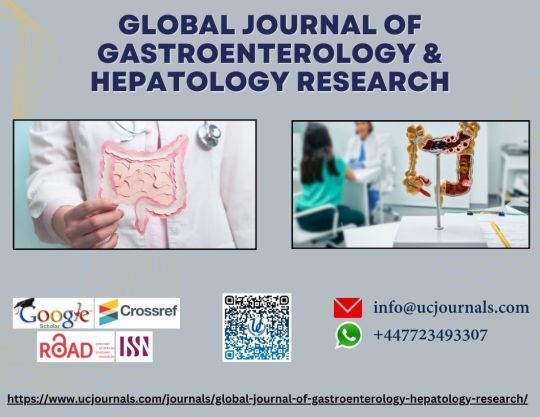
Understanding the Digestive System:
Before delving into the realm of gastroenterology, it's essential to have a basic understanding of the digestive system's anatomy and function. The process begins in the mouth, where enzymes in saliva start breaking down food as it's chewed. The food then travels down the esophagus and into the stomach, where gastric juices further break it down into a semi-liquid substance known as chyme. From there, chyme enters the small intestine, where the majority of nutrient absorption occurs, facilitated by specialized structures called villi and microvilli. Finally, any remaining waste passes into the large intestine, where water is absorbed, and feces are formed before being expelled from the body.
The Role of Gastroenterology:
Gastroenterology is the branch of medicine focused on the digestive system and its disorders. Gastroenterologists are highly trained specialists who diagnose and treat a wide range of conditions affecting the esophagus, stomach, intestines, liver, gallbladder, and pancreas. They utilize various diagnostic tools and procedures, such as endoscopy, colonoscopy, imaging studies, and laboratory tests, to identify gastrointestinal (GI) issues accurately. From common ailments like acid reflux and irritable bowel syndrome (IBS) to more complex conditions such as Crohn's disease and liver cirrhosis, gastroenterologists play a vital role in managing digestive health and improving patients' quality of life.
UCJournals provide a platform for , We cordially extend an invitation to researchers from all around the globe to submit their research work for publishing in our Global Journal Of Gastroenterology & Hepatology Research.
To know more, visit here: https://www.ucjournals.com/journals/global-journal-of-gastroenterology-hepatology-research/
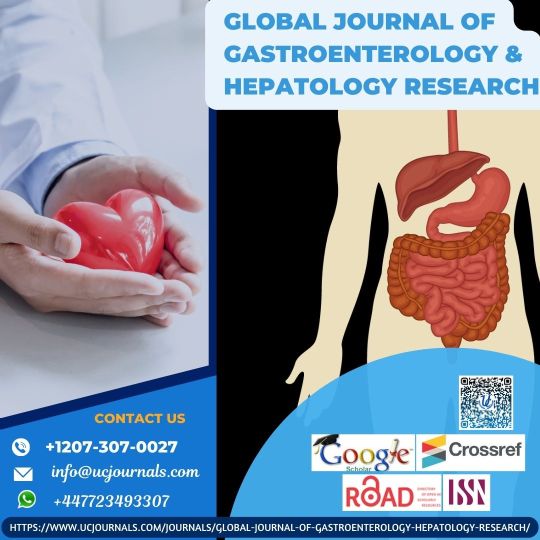
Common Gastrointestinal Disorders:
Let's take a closer look at some of the most prevalent gastrointestinal disorders that gastroenterologists encounter:
Gastroesophageal Reflux Disease (GERD): Characterized by chronic acid reflux, GERD can lead to heartburn, regurgitation, chest pain, and complications like esophagitis and Barrett's esophagus.
Inflammatory Bowel Disease (IBD): Including Crohn's disease and ulcerative colitis, IBD involves chronic inflammation of the digestive tract, causing symptoms such as abdominal pain, diarrhea, rectal bleeding, and weight loss.
Irritable Bowel Syndrome (IBS): A functional disorder of the intestines, IBS manifests as abdominal pain or discomfort, bloating, and changes in bowel habits without any evidence of structural damage.
Gallstones: Hardened deposits in the gallbladder, gallstones can cause abdominal pain, nausea, vomiting, and complications such as cholecystitis and pancreatitis.
Celiac Disease: An autoimmune disorder triggered by gluten consumption, celiac disease damages the small intestine and leads to symptoms like diarrhea, abdominal pain, fatigue, and malnutrition.
The Importance of Seeking Professional Care:
While some gastrointestinal symptoms may resolve on their own or with minor interventions, others require medical attention from a gastroenterologist. Ignoring persistent digestive issues or attempting to self-diagnose and treat can lead to complications and delayed recovery. Gastroenterologists have the expertise and resources to accurately diagnose GI disorders and develop personalized treatment plans tailored to each patient's needs. Whether it's lifestyle modifications, medications, endoscopic procedures, or surgery, their goal is to alleviate symptoms, promote healing, and improve overall digestive health.
UCJournals provide a platform for , We cordially extend an invitation to researchers from all around the globe to submit their research work for publishing in our Global Journal Of Gastroenterology & Hepatology Research.
To know more, visit here: https://www.ucjournals.com/journals/global-journal-of-gastroenterology-hepatology-research/

Conclusion:
Navigating the digestive maze can be challenging, but with the guidance of skilled gastroenterologists, patients can find their way to better gastrointestinal health. From routine screenings and preventive care to advanced treatments for complex conditions, gastroenterology offers a comprehensive approach to managing digestive disorders and optimizing well-being. By understanding the importance of digestive health and seeking timely medical care when needed, individuals can enjoy a higher quality of life and digestive comfort for years to come.
0 notes
Text
What Are Some Recommended Drinks to Mix with Protein Powder for Individuals with Diabetes Who Want to Gain Muscle Weight?

In the pursuit of muscle gain, individuals with diabetes encounter unique challenges when it comes to meeting their protein needs. The significance of protein intake for muscle development cannot be overstated, yet finding suitable sources can be a daunting task. Enter protein powder: a convenient solution offering versatility and ease of use. In this article, we delve into the intricacies of protein consumption for individuals with diabetes and explore recommended drinks to enhance their muscle-building journey.
Importance of Protein Intake for Muscle Gain in Individuals with Diabetes
Protein serves as the building blocks for muscle tissue, playing a pivotal role in repair and growth. For individuals with diabetes, maintaining adequate muscle mass is essential for overall health and metabolic function. However, fluctuations in blood sugar levels and dietary restrictions pose unique challenges in meeting protein requirements through traditional food sources alone.
Moreover, muscle mass plays a crucial role in glucose metabolism, as skeletal muscle serves as the primary site for insulin-mediated glucose uptake. Therefore, preserving or increasing muscle mass through protein intake is not only vital for physical performance but also for glucose regulation in individuals with diabetes.
Challenges of Finding Suitable Protein Sources for People with Diabetes
Dietary restrictions imposed by diabetes often limit options for protein-rich foods, particularly those with added sugars or high carbohydrate content. Furthermore, individuals with diabetes must navigate the delicate balance of managing blood sugar levels while striving to build muscle, making the selection of appropriate protein sources a nuanced endeavor.
The glycemic index (GI) of foods is another consideration for individuals with diabetes when selecting protein sources. Foods with a high GI can cause rapid spikes in blood sugar levels, potentially exacerbating glycemic control. Therefore, choosing protein sources with a low to moderate GI can help mitigate these effects and support stable blood glucose levels.
Introduction to Protein Powder as a Convenient Solution
Protein powder emerges as a convenient and versatile option for individuals with diabetes seeking to augment their protein intake. With various formulations tailored to specific dietary needs, protein powder offers a customizable approach to meeting protein requirements without compromising blood sugar control.
Moreover, protein powder provides a concentrated source of protein in a convenient, shelf-stable form, making it ideal for individuals with busy lifestyles or limited access to fresh foods. By incorporating protein powder into their diet, individuals with diabetes can ensure consistent protein intake throughout the day, supporting muscle repair, and growth.
Understanding Diabetes and Muscle Gain
Overview of Diabetes Types and Their Impact on Muscle Gain
Diabetes encompasses a spectrum of metabolic disorders characterized by impaired insulin production or utilization, leading to elevated blood sugar levels. Type 1 diabetes results from autoimmune destruction of insulin-producing cells in the pancreas, necessitating exogenous insulin administration. In contrast, type 2 diabetes typically arises from insulin resistance, wherein cells fail to respond effectively to insulin signals.
The impact of diabetes on muscle gain varies depending on the type and severity of the condition. In individuals with type 1 diabetes, muscle protein metabolism may be affected by fluctuations in insulin levels, necessitating careful management of insulin dosing around exercise and meals. Similarly, individuals with type 2 diabetes may experience challenges in muscle protein synthesis due to insulin resistance and metabolic dysregulation.
Furthermore, individuals with diabetes may experience muscle wasting or weakness, a condition known as diabetic myopathy, which can further impair muscle function and physical performance. Therefore, optimizing protein intake and engaging in regular resistance exercise are essential strategies for preserving muscle mass and function in individuals with diabetes.
Importance of Managing Blood Sugar Levels During Muscle-Building Efforts
Maintaining stable blood sugar levels is crucial for optimizing muscle-building efforts in individuals with diabetes. Fluctuations in blood glucose can disrupt protein metabolism and impair muscle recovery and growth. Strategic management of carbohydrate intake, insulin dosing, and timing of meals and exercise plays a pivotal role in supporting muscle gain while mitigating the risk of hyperglycemia or hypoglycemia.
Moreover, blood sugar management is intricately linked to exercise performance and recovery in individuals with diabetes. Hypoglycemia during or after exercise can impair cognitive function, decrease muscle glycogen stores, and delay recovery, highlighting the importance of proper nutrition and glycemic control in supporting physical activity and muscle growth.
The Role of Protein in Muscle Repair and Growth for Individuals with Diabetes
Protein plays a central role in muscle repair and growth, facilitating the synthesis of new muscle tissue in response to exercise-induced damage. In individuals with diabetes, adequate protein intake is essential for preserving lean muscle mass and supporting metabolic health. By supplying essential amino acids necessary for muscle protein synthesis, protein supplementation can augment the effects of resistance training and promote muscle hypertrophy.
Furthermore, protein intake has been shown to enhance insulin sensitivity and glucose uptake in skeletal muscle, potentially improving glycemic control in individuals with diabetes. Therefore, optimizing protein intake through dietary sources and supplementation is a cornerstone of comprehensive diabetes management, especially for those aiming to gain muscle mass.
Choosing the Right Protein Powder
Types of Protein Powders Suitable for Individuals with Diabetes
When selecting a protein powder, individuals with diabetes should consider the type of protein source, as well as additional ingredients that may impact blood sugar levels. Common types of protein powders include:
Whey Protein
Whey protein, derived from milk, is a complete protein source rich in essential amino acids. It is rapidly absorbed by the body, making it an ideal choice for post-workout supplementation to support muscle recovery and growth.
Casein Protein
Casein protein, also derived from milk, is digested more slowly than whey protein, providing a sustained release of amino acids into the bloodstream. This makes it suitable for consumption before bed or during periods of fasting to prevent muscle breakdown.
Plant-Based Protein Options (Pea Protein, Soy Protein)
Plant-based protein powders, such as pea protein and soy protein, offer viable alternatives for individuals with dairy allergies or dietary preferences. These options provide a complete amino acid profile and may offer additional health benefits, such as improved heart health and reduced inflammation.
Moreover, plant-based protein powders are often lower in carbohydrates and sugars compared to whey or casein protein powders, making them suitable for individuals with diabetes who need to monitor their carbohydrate intake closely.
Considerations for Selecting Low-Sugar or Sugar-Free Protein Powders
Given the importance of blood sugar management in diabetes, individuals should opt for protein powders with minimal added sugars or carbohydrates. Sugar-free or low-sugar formulations are preferable to avoid spikes in blood glucose levels, particularly for those with insulin sensitivity or carbohydrate restrictions.
Furthermore, individuals should be cautious when choosing flavored protein powders, as they may contain added sugars or artificial sweeteners that can affect blood sugar levels. Opting for unflavored or naturally sweetened protein powders can help mitigate these risks while providing a clean source of protein for muscle growth.
Checking for Additional Ingredients That May Affect Blood Sugar Levels
In addition to sugar content, individuals should scrutinize protein powder labels for other ingredients that may influence blood sugar levels. Artificial sweeteners, such as sucralose or aspartame, should be used judiciously, as they may impact insulin sensitivity or gut health in some individuals. Similarly, additives like maltodextrin or dextrose should be avoided, as they can contribute to unwanted fluctuations in blood glucose.
Moreover, individuals with diabetes should be mindful of potential allergens or sensitivities when selecting protein powders, especially those containing soy, dairy, or gluten. Reading product labels and consulting with a healthcare provider or registered dietitian can help individuals make informed choices based on their unique dietary needs and preferences.
Recommended Protein Powder Brands for Individuals with Diabetes
Review of Popular Protein Powder Brands Suitable for Diabetics
Numerous protein powder brands cater to individuals with diabetes by offering low-sugar or sugar-free formulations. When evaluating protein powder options, considerations such as nutritional content, taste, mixability, and customer feedback are paramount.
Nutritional Content and Sugar Levels Comparison
Comparing the nutritional profiles of different protein powders allows individuals to make informed decisions based on their dietary needs and preferences. Look for products with high protein content per serving and minimal added sugars or carbohydrates. Some brands may also fortify their protein powders with vitamins, minerals, or digestive enzymes to enhance overall nutritional value.
Moreover, individuals should pay attention to the serving size and recommended dosage of protein powders, as excessive protein intake can strain the kidneys and potentially lead to negative health consequences. Consulting with a healthcare provider or registered dietitian can help individuals determine their optimal protein requirements based on factors such as age, weight, activity level, and overall health status.
Taste and Mixability Considerations
The palatability of protein powders can vary widely depending on flavorings and sweeteners used. Experimenting with different brands and flavors can help individuals find options that align with their taste preferences. Additionally, assessing the mixability of protein powders is important to ensure smooth texture and ease of consumption, whether mixed with water, milk, or other beverages.
To enhance the taste and texture of protein drinks, individuals can experiment with various ingredients such as fruits, vegetables, nuts, seeds, and spices. Adding ingredients like frozen berries, nut butter, cocoa powder, cinnamon, or vanilla extract can elevate the flavor profile of protein shakes and smoothies without compromising their nutritional integrity.
Customer Reviews and Feedback from Individuals with Diabetes
Seeking feedback from other individuals with diabetes who have tried specific protein powder brands can provide valuable insights into product efficacy and tolerability. Online forums, social media groups, and product reviews are excellent resources for gauging real-world experiences and identifying brands that resonate with the diabetic community.
Moreover, individuals should consider factors such as product reputation, manufacturing practices, and customer service when evaluating protein powder brands. Choosing reputable brands with a track record of quality and transparency can instill confidence in the safety and efficacy of protein supplements for individuals with diabetes.
Benefits of Mixing Protein Powder with Drinks for Muscle Gain
Enhanced Protein Absorption and Utilization
Mixing protein powder with liquids enhances its solubility and digestibility, facilitating rapid absorption of amino acids into the bloodstream. This accelerates muscle protein synthesis and promotes muscle repair and growth, particularly when consumed post-exercise or during periods of heightened metabolic demand.
Moreover, consuming protein drinks immediately after exercise can capitalize on the anabolic window, a period of heightened sensitivity to nutrient uptake that occurs in the hours following a workout. By supplying the body with readily available amino acids, protein drinks can maximize muscle recovery and adaptation, leading to greater gains in strength and hypertrophy over time.
Improved Taste and Palatability
While protein powders can be bland or chalky on their own, mixing them with flavorful liquids enhances taste and palatability, making them more enjoyable to consume. By incorporating ingredients such as fruits, spices, or extracts, individuals can customize protein drinks to suit their taste preferences and dietary needs.
Furthermore, adding natural sweeteners like honey, maple syrup, or agave nectar can enhance the sweetness of protein drinks without significantly impacting blood sugar levels. Alternatively, individuals can opt for low-glycemic sweeteners such as stevia or monk fruit extract to achieve the desired level of sweetness without the caloric or glycemic load of traditional sugars.
Convenient Way to Increase Protein Intake Throughout the Day
Protein drinks offer a convenient and portable solution for boosting protein intake throughout the day, especially for individuals with busy lifestyles or erratic eating patterns. Whether consumed as a snack, meal replacement, or post-workout recovery aid, protein drinks provide a quick and easy way to meet protein needs without the hassle of meal preparation or cooking.
Moreover, protein drinks can be customized to fit individual dietary preferences and nutritional goals. From simple protein shakes made with water or milk to more elaborate smoothie recipes featuring fruits, vegetables, and superfoods, the possibilities are endless when it comes to incorporating protein powder into delicious and nutritious beverages.
Variety in Drink Options to Suit Different Preferences and Dietary Restrictions
One of the advantages of mixing protein powder with drinks is the versatility it offers in terms of flavor combinations and ingredient choices. Whether individuals prefer sweet or savory flavors, there are endless possibilities for creating satisfying and nutritious protein drinks to support muscle gain and overall health.
For individuals with dietary restrictions or food allergies, protein drinks can be tailored to accommodate specific needs while still delivering essential nutrients and amino acids. For example, individuals following a vegan or dairy-free diet can opt for plant-based protein powders made from ingredients like pea, rice, hemp, or pumpkin seed protein.
Best Drinks to Mix with Protein Powder for Individuals with Diabetes
Water-Based Options
Plain Water
Water is the simplest and most accessible option for mixing with protein powder. It provides hydration without adding extra calories or sugar, making it an ideal choice for individuals with diabetes who need to monitor their carbohydrate intake closely.
Flavored Water (Sugar-Free)
For those seeking a bit more flavor, sugar-free flavored waters can be a refreshing alternative to plain water. Look for options sweetened with natural flavors or zero-calorie sweeteners to avoid unnecessary spikes in blood sugar levels.
Dairy Alternatives
Unsweetened Almond Milk
Almond milk is a popular dairy alternative that provides a creamy texture and nutty flavor to protein drinks. Opt for unsweetened varieties to keep sugar levels in check while still enjoying the benefits of a plant-based milk alternative.
Coconut Milk (Unsweetened)
Coconut milk adds richness and tropical flavor to protein drinks, making it a delicious option for individuals with diabetes. Choose unsweetened coconut milk to avoid added sugars and unnecessary carbohydrates.
Soy Milk (Unsweetened)
Soy milk is a versatile and nutritious option for mixing with protein powder. It provides a complete source of protein and essential nutrients while offering a neutral flavor that pairs well with a variety of ingredients.
Low-Sugar Fruit Juices
Lemon or Lime Juice (Freshly Squeezed)
Freshly squeezed lemon or lime juice adds a burst of citrusy flavor to protein drinks without the added sugars found in commercial juice blends. Additionally, citrus fruits are rich in vitamin C and antioxidants, which support immune function and overall health.
Cranberry Juice (Unsweetened)
Unsweetened cranberry juice provides a tart and tangy flavor profile that complements the natural sweetness of protein powder. Cranberries are also rich in antioxidants and phytonutrients, which have been shown to support urinary tract health and reduce inflammation.
Tomato Juice (Unsweetened)
Tomato juice offers a savory option for individuals looking to add depth of flavor to their protein drinks. Tomatoes are rich in vitamins, minerals, and antioxidants, making tomato juice a nutritious addition to any beverage.
Coffee and Tea
Black Coffee (Unsweetened)
Black coffee provides a bold and robust flavor that pairs well with the natural bitterness of some protein powders. Additionally, caffeine found in coffee can enhance alertness and focus, making it an ideal pre-workout beverage.
Green Tea (Unsweetened)
Green tea offers a milder flavor profile with subtle earthy notes that complement the taste of protein powder. Moreover, green tea is rich in catechins, powerful antioxidants that support cardiovascular health and metabolism.
Herbal Teas (Unsweetened)
Herbal teas come in a variety of flavors and blends, making them a versatile option for mixing with protein powder. From peppermint and chamomile to ginger and turmeric, herbal teas offer unique flavor profiles and health benefits to enhance protein drinks.
Creative Protein Powder Drink Recipes for Muscle Gain
Chocolate Banana Protein Smoothie
Ingredients:
1 scoop chocolate whey protein powder
1 ripe banana
1 cup unsweetened almond milk
1 tablespoon unsweetened cocoa powder
1 tablespoon almond butter
Ice cubes (optional)
Preparation:
In a blender, combine whey protein powder, banana, almond milk, cocoa powder, almond butter, and ice cubes (if using).
Blend until smooth and creamy.
Pour into a glass and enjoy immediately.
Berry Blast Protein Shake
Ingredients:
1 scoop vanilla whey protein powder
1/2 cup mixed berries (such as strawberries, blueberries, and raspberries)
1 cup unsweetened coconut milk
1 tablespoon honey or maple syrup (optional)
Handful of spinach (optional)
Ice cubes (optional)
Preparation:
In a blender, combine whey protein powder, mixed berries, coconut milk, honey or maple syrup (if using), spinach (if using), and ice cubes (if using).
Blend until smooth and well combined.
Pour into a glass and garnish with additional berries, if desired.
Vanilla Almond Protein Iced Coffee
Ingredients:
1 scoop vanilla whey protein powder
1 cup brewed coffee, chilled
1/2 cup unsweetened almond milk
1 tablespoon almond extract
1 tablespoon honey or maple syrup (optional)
Ice cubes
Preparation:
In a blender, combine whey protein powder, chilled brewed coffee, almond milk, almond extract, honey or maple syrup (if using), and ice cubes.
Blend until smooth and frothy.
Pour into a glass filled with ice and enjoy immediately.
Tips for Managing Blood Sugar Levels When Consuming Protein Drinks
Monitoring Carbohydrate Intake in Mixed Protein Drinks
While protein drinks can be beneficial for individuals with diabetes, it's essential to consider the carbohydrate content of added ingredients. Carbohydrates can impact blood sugar levels, so individuals should be mindful of their total carb intake when mixing protein drinks with fruits, juices, or sweeteners.
Timing of Protein Consumption in Relation to Insulin Doses or Medication
Individuals using insulin or other diabetes medications should coordinate their protein intake with their medication regimen to avoid potential fluctuations in blood sugar levels. Consuming protein drinks alongside meals or snacks can help stabilize blood glucose levels and optimize insulin sensitivity.
Consulting with a Healthcare Provider or Nutritionist for Personalized Advice
Every individual with diabetes has unique dietary needs and health goals, so it's essential to consult with a healthcare provider or registered dietitian for personalized nutrition guidance. A qualified professional can help individuals develop a tailored meal plan that supports muscle gain while maintaining optimal blood sugar control.
Adjusting Protein Intake Based on Individual Insulin Sensitivity and Activity Levels
Managing blood sugar levels when consuming protein drinks requires careful attention to individual insulin sensitivity and activity levels. Individuals may need to adjust their protein intake based on factors such as exercise intensity, duration, and timing to optimize muscle recovery and glycemic control.
Incorporating Protein Drinks into a Balanced Diet Plan
Integrating Protein Drinks into Meal Planning for Individuals with Diabetes
Protein drinks can be incorporated into a balanced meal plan for individuals with diabetes to ensure adequate nutrient intake and support muscle gain. By pairing protein drinks with whole foods like lean meats, fish, poultry, eggs, dairy products, legumes, and vegetables, individuals can create balanced meals that promote satiety, muscle repair, and metabolic health.
Balancing Protein Intake with Carbohydrates and Fats for Optimal Blood Sugar Control
While protein is essential for muscle growth, it's important to maintain a balance of macronutrients, including carbohydrates and fats, for optimal blood sugar control. Pairing protein drinks with complex carbohydrates, healthy fats, and fiber-rich foods can help stabilize blood glucose levels and prevent unwanted fluctuations.
Importance of Regular Monitoring and Adjustments Based on Individual Response
Monitoring blood sugar levels regularly is crucial for individuals with diabetes to assess the impact of protein drinks on glycemic control. Keeping track of blood glucose readings before and after consuming protein drinks can help identify patterns and make necessary adjustments to meal timing, insulin dosing, or macronutrient distribution.
Precautions and Considerations
Potential Allergic Reactions to Protein Powder Ingredients
Individuals with allergies or sensitivities to certain ingredients should exercise caution when selecting protein powders. Common allergens found in protein powders include milk, soy, eggs, and nuts, so it's essential to read product labels carefully and choose options that are free from allergens or cross-contamination.
Monitoring for Any Adverse Effects on Blood Sugar Levels
While protein drinks can be beneficial for muscle gain, some individuals may experience adverse effects on blood sugar levels, such as hyperglycemia or hypoglycemia. It's important to monitor blood glucose levels closely and seek medical advice if experiencing persistent or significant fluctuations.
Hydration and Electrolyte Balance When Consuming Protein Drinks
Protein drinks can contribute to overall fluid intake, but it's essential to stay hydrated by drinking plenty of water throughout the day. Additionally, individuals should be mindful of electrolyte balance, especially if consuming protein drinks after intense exercise or in hot weather conditions.
Seeking Medical Advice If Experiencing Any Unusual Symptoms or Reactions
If individuals experience any unusual symptoms or reactions after consuming protein drinks, such as digestive discomfort, allergic reactions, or changes in blood sugar levels, they should seek medical advice promptly. A healthcare provider can evaluate symptoms, identify potential triggers, and recommend appropriate interventions or alternative strategies.
Conclusion
In conclusion, mixing protein powder with drinks offers a convenient and effective way for individuals with diabetes to increase their protein intake and support muscle gain. By selecting suitable protein powders, choosing compatible mixers, and incorporating creative recipes, individuals can enjoy a variety of delicious and nutritious protein drinks while maintaining optimal blood sugar control.
Moreover, by following practical tips for managing blood sugar levels, incorporating protein drinks into a balanced diet plan, and staying vigilant about potential precautions and considerations, individuals with diabetes can reap the benefits of protein supplementation while prioritizing their overall health and well-being.
So, whether you prefer a refreshing fruit smoothie, a creamy iced coffee, or a classic protein shake, there are plenty of options to suit your taste preferences and dietary needs. Remember to experiment with different ingredients and recipes, listen to your body's feedback, and consult with healthcare professionals for personalized advice along the way.
With dedication, consistency, and a bit of creativity, individuals with diabetes can achieve their muscle-building goals while maintaining optimal blood sugar control and enjoying delicious protein drinks as part of a balanced lifestyle. Cheers to your health and success on your muscle-building journey!
0 notes
Text
Navigating Digestive Health: Finding the Best Gastroenterologist Near You
In the realm of healthcare, finding the right specialist can make all the difference, especially when it comes to your digestive health. Whether you're experiencing discomfort, seeking preventive care, or managing a chronic condition, consulting a gastroenterologist can provide invaluable insights and treatments. In this article, we'll explore the significance of gastroenterology, the importance of choosing the best specialist, and how to locate one in your vicinity, particularly in Bangalore's major hospitals.
Understanding Gastroenterology:
Gastroenterology is a branch of medicine focused on diagnosing, treating, and preventing disorders of the digestive system, including the esophagus, stomach, intestines, liver, pancreas, and gallbladder. These specialists, known as gastroenterologists, undergo extensive training to address a wide range of gastrointestinal (GI) conditions, from common issues like acid reflux and irritable bowel syndrome (IBS) to more complex diseases such as Crohn's disease and liver cirrhosis.
Why Choosing the Right Gastroenterologist Matters:
Selecting the best gastroenterologist for your needs is crucial for several reasons:
Expertise and Experience: Experienced gastroenterologists possess in-depth knowledge of digestive disorders and the latest advancements in treatment options, ensuring accurate diagnosis and effective management of your condition.
Comprehensive Care: The best gastroenterologists offer comprehensive care, including diagnostic procedures like endoscopy and colonoscopy, as well as personalized treatment plans tailored to your specific health goals and concerns.
Patient-Centered Approach: A compassionate and patient-centered approach is essential in gastroenterology, as many digestive conditions can significantly impact one's quality of life. The right specialist will prioritize your comfort, well-being, and involvement in decision-making throughout your healthcare journey.
Finding the Best Gastroenterologist Near You:
In Bangalore, renowned hospitals play a pivotal role in providing access to top-tier gastroenterology specialists. When searching for the best gastroenterologist near you, consider the following steps:
Online Research: Start by conducting online research using search engines and healthcare directories. Use keywords like "gastroenterologist near me" or "best gastroenterologist in Bangalore" to narrow down your options.
Read Reviews: Take the time to read patient reviews and testimonials to gauge the experiences of others who have visited gastroenterologists in your area. Look for positive feedback regarding expertise, bedside manner, and overall satisfaction with the provided care.
Hospital Affiliation: Consider hospitals known for their excellence in gastroenterology services. Larger institutions often have dedicated GI departments with specialized facilities and a multidisciplinary team of experts, including gastroenterologists, surgeons, and nutritionists.
Verify Credentials: Ensure that the gastroenterologist you're considering is board-certified and has the necessary credentials and affiliations with reputable medical organizations. This guarantees adherence to high standards of practice and ongoing professional development.
Gastroenterology Specialists in Bangalore's Major Hospitals:
In Bangalore, several major hospitals boast exceptional gastroenterology departments staffed by skilled specialists. Among these, BigHospitals stands out as a leading healthcare provider, offering state-of-the-art facilities and a team of renowned gastroenterologists.
At BigHospitals, patients can expect:
Access to leading gastroenterology specialists with expertise in diagnosing and treating a wide range of digestive disorders.
Comprehensive services, including advanced diagnostic procedures, minimally invasive treatments, and ongoing management of GI conditions.
Collaborative care approach involving coordination with other specialties when necessary, ensuring holistic and tailored treatment plans.
Whether you're seeking preventive care, managing a chronic condition, or in need of specialized intervention, BigHospitals' gastroenterology department is dedicated to providing personalized, high-quality care to meet your unique needs.
In conclusion, prioritizing your digestive health by consulting a reputable gastroenterologist is paramount for optimal well-being. By following the steps outlined above and leveraging the expertise available at prominent institutions like BigHospitals in Bangalore, you can embark on a path towards better digestive health and overall wellness.
0 notes